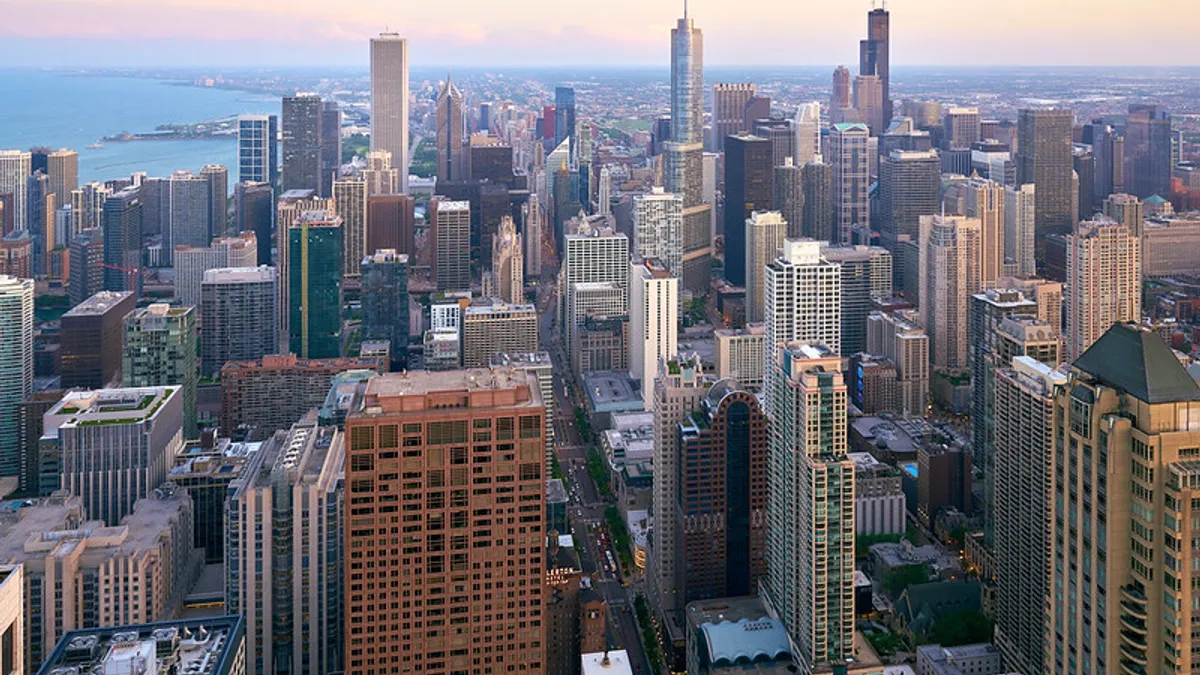Dive Brief:
-
Chicago Mayor Lori Lightfoot has appointed Angela Tovar as the city's new chief sustainability officer.
-
Tovar's appointment represents the city's latest move to create a more equitable environmental policy agenda that addresses its racial disparities, while also investing in a more inclusive economy — particularly in light of the new coronavirus (COVID-19) pandemic's disproportionate effect on Black residents.
-
Tovar was selected in part for her experience promoting racial equity, environmental justice, public health and inclusive economic progress, Lightfoot said in a statement. "As the COVID-19 crisis has shown us, our everyday environment has a direct impact on our individual health and wellness," Lightfoot continued, adding that she was looking forward to "working with her in our shared mission to hold violators accountable and tackle the widespread injustices that have impacted our neighborhoods for generations."
Dive Insight:
The hiring of a new chief sustainability officer is part of the city's efforts to reach its 2025 and 2035 climate goals.
Chicago aims to reduce greenhouse gas emissions (GHG) 26-28% from 2005 to 2025. So far, the city has reduced emissions 15% from 2005 to 2017, or the equivalent of removing more than 1.2 million passenger vehicles off the road. And Chicago's 2035 climate goals include transitioning all of its buildings to renewable energy, in addition to electrifying its entire bus fleet by 2040.
Lightfoot's administration is also working to achieve those goals while prioritizing racial equity and an inclusive economy, with Tovar's appointment representing the latest in those efforts. In a statement, Tovar said she aims to advance "a robust climate and sustainability agenda that is rooted in equity and is aimed at mitigating environmental harm in our most overburdened communities."
COVID-19 has highlighted the city’s underlying public health and environmental justice inequities. As of April 2020, 52% of Chicago’s positive COVID-19 cases and 72% of COVID-19 deaths were among the city's Black residents — despite Black residents representing just 30% of the city’s population.
Chicago's Black residents are more susceptible to the disease due to pre-existing conditions, exacerbated by neighborhoods that have experienced years of disinvestment, with lower quality access to healthcare, transit, affordable food, green space and more.
And this is not the first time Chicago's Black residents have been over-burdened by a public health crisis. In a 1995 heat wave, Black seniors older than 85-years-old were over two times as likely to die compared to White residents. And during a 1989 national measles epidemic, over 70% of local cases were among Black children.
Lightfoot's administration aims to address these disparities in their environmental agenda, and has said she would work to ensure long-term resiliency solutions.
To keep up with all of our coverage on how the new coronavirus is impacting U.S. cities, visit our daily tracker.












